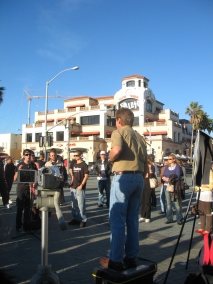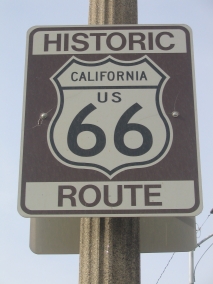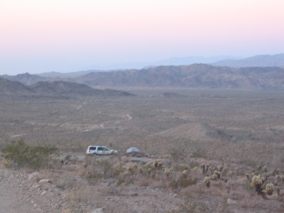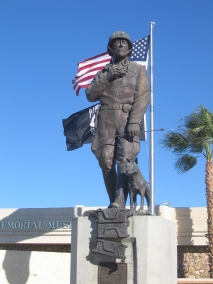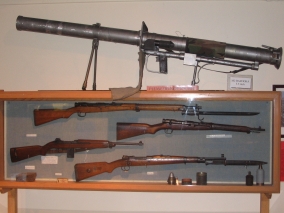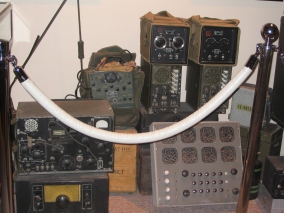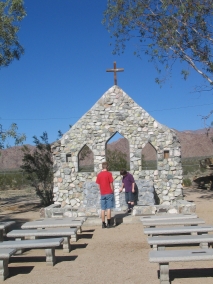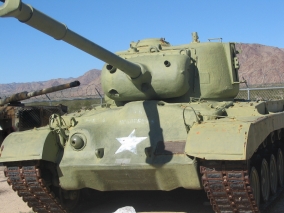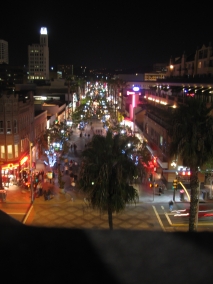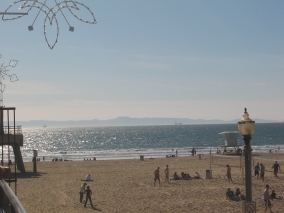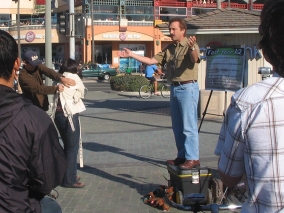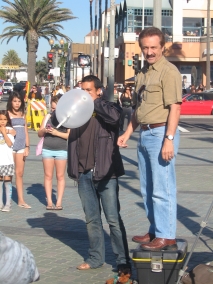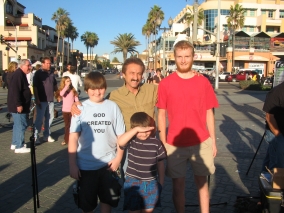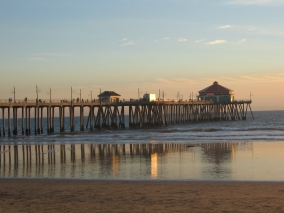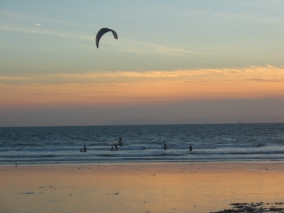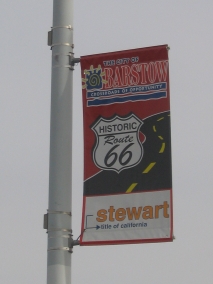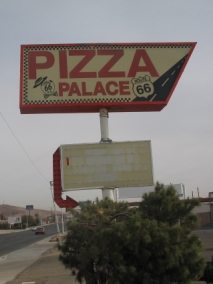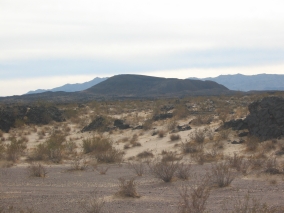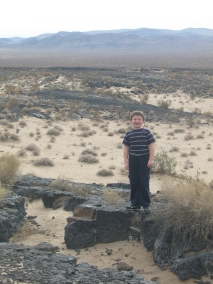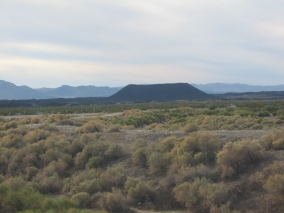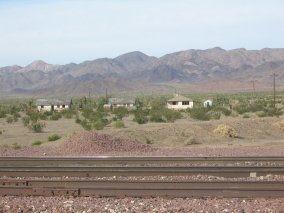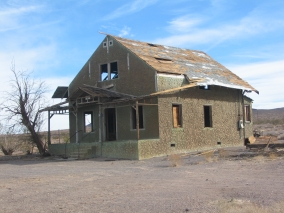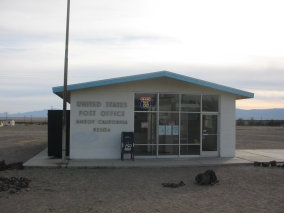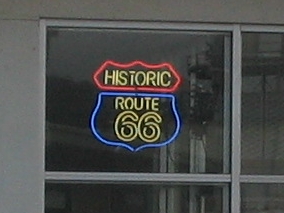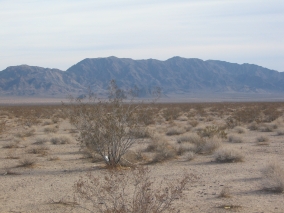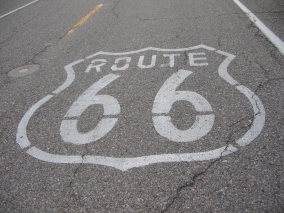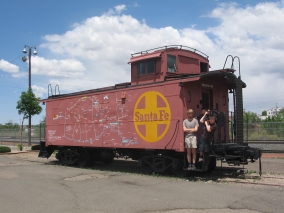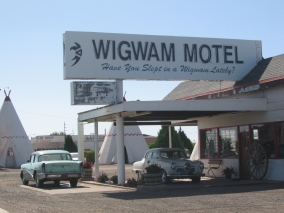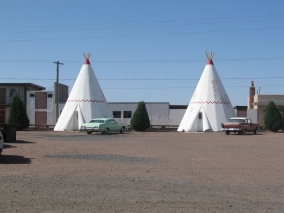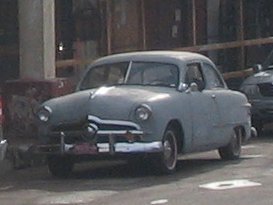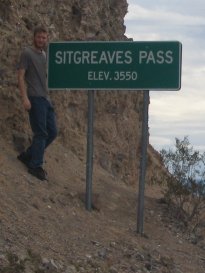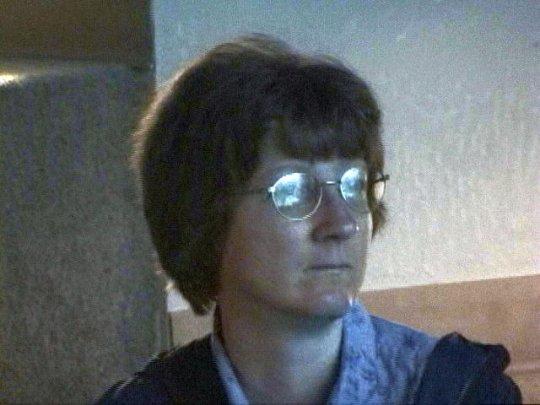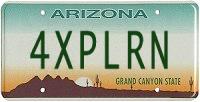Mother’s Day was coming up and what did I want to do on my special weekend? Go back to Route 66, of course – to do some more exploring on the Beale Wagon Road, and also to see Thomas the Train. A real life-sized Thomas was going to be at the Grand Canyon Railway, which intrigued me because we’ve been fans of Thomas the Tank Engine ever since the original series narrated by Ringo Starr.
Tickets for “A Day Out With Thomas” were $20 for a 20-minute ride with Thomas pulling the train. This was a lot cheaper than $60 per ticket for a regular train ride on the Grand Canyon Railway, but it would still be almost $100 for a family of five. So we were debating about whether it was worth it or not, but by the time we got around to solidifying our plans, the tickets for the days we wanted were all sold out. Then I had an even better idea! When you’re on the train you don’t get to see much of the engine anyway. But what if we were able to park or walk next to the track somewhere and just watch it go by? We’d be able to see it for a good long time that way.
To get an early start, we drove up north on Friday night to camp in the forest near Williams. From I-40, we got off on Parks Road (which is Old Route 66). After a while, Parks Road just kind of turns into Forest Road 74 and heads north past the Pittman Valley Helibase and an El Paso Natural Gas compressor station. We turned right on a dirt road across from the natural gas facility and set up our tent there. It was quite cold in the woods at night (50º when we checked). The compressor station was so noisy, it seemed like it could be heard for miles around, but we didn’t bother moving.
The next morning before heading in the direction of Williams to see the train, I wanted to look for some more of the Beale Wagon Road while we were up there. The place that I had in mind was not too far from where we camped. As it turned out, it was even closer than we thought because we made a big loop around and ended up back on FR 74 right where we had started from!
The way we had gone was, we went to Parks and at the Maine Consolidated School we headed north toward Spring Valley. We were looking for signs of the Beale Wagon Road and finally found one where the road turned westward at the corner of a large ranch. We followed the Beale signs through the forest, although they seemed to be few and far between. Then we looked for the turnoff to Laws Spring. We found it, but we were unclear as to how far it was and where to go next.
We just kept driving north on that dirt road, being careful not to get off on any side roads, and eventually we found the trailhead for Laws Spring. It had a rather large parking area, despite being in a remote piñon-juniper woodland with no one else around for miles. We hiked down to the spring which was only about a quarter mile. There we came upon a huge pool of water fed by a spring and surrounded by a neat rock outcropping. There were ancient petroglyphs on the rocks, as well as historic names and dates carved by Beale’s men and others who passed that way.
The trail continued on for a quarter mile past Laws Spring, where in the middle of a flat plain there was another marker for the Beale Wagon Road. I thought a wagon road would be so well worn that the tracks would last forever, but there was no evidence of it at all. We wouldn’t have known it was there if it wasn’t for the signpost.
If you’re interested in exploring the Beale Wagon Road, here are some tips:
Beale Wagon Road traverses the northern part of the state, running east-west, primarily north of and roughly paralleling Interstate 40. Many forest service roads are presently located where the Beale Road used to be, and other roads intersect the Beale Road as well, so there are a variety of access points. Forest Road 141 out of Parks is suitable for passenger vehicles, but on most forest roads a high clearance vehicle is recommended. Good places to look for the Beale Wagon Road include: Leupp, Government Hill, Laws Spring, and west of Seligman. Depending on the area, the Beale Wagon Road route may be marked with rock cairns, brass cap markers, tree blazes, and 4" by 4" wood posts.
It’s great that the Forest Service is currently developing the Beale Wagon Road into a recreational trail. Laws Spring is the only parking facility along the route so far, but more trailheads with interpretive signs are planned in the future. Portions of the historic route that are part of the forest road system may be accessed by any means, including motor vehicles and mountain bicycles. The off-road trail sections are open only to hikers and horseback riders. A pathway has not yet been cleared on the trail sections, so it can be a challenge to follow – but that’s part of the adventure isn’t it?
http://www.fs.fed.us/r3/kai/recreation/trails/handouts/wil_beale.pdf (Click here for a Printable Map from the Forest Service.)
Next on our agenda was the Grand Canyon Railway in hopes of seeing Thomas the Train. We spotted the cute little blue tank engine at the station as soon as we pulled into town. Contrary to what we were led to believe, however, Thomas wasn’t pulling the train at all. In fact, he wasn’t even a working engine. Thomas was attached to one end of the train and a real diesel engine was at the other end. When the train left the station, it was pulled away by the diesel engine and Thomas simply trailed behind like a caboose. The train just went back and forth on the same track, ten minutes out and ten minutes back. So when it returned to the station, the real engine would be pushing from behind, making it look like Thomas was pulling the train. All Thomas did was whistle “Pip, Pip” all day long. Maybe it fooled the two-year-olds, but even my 7-year-old could tell that it was a fake. Now my kids all make fun of me for wanting to see it in the first place, but I’m still glad that we did. Watch the video below and you can say that you saw it too!
http://www.knowledgehouse.info/Thomas.wmv
Labels: Beale Wagon Road, Grand Canyon Railway, Laws Spring, Route 66, Thomas the Tank Engine, train, Williams
